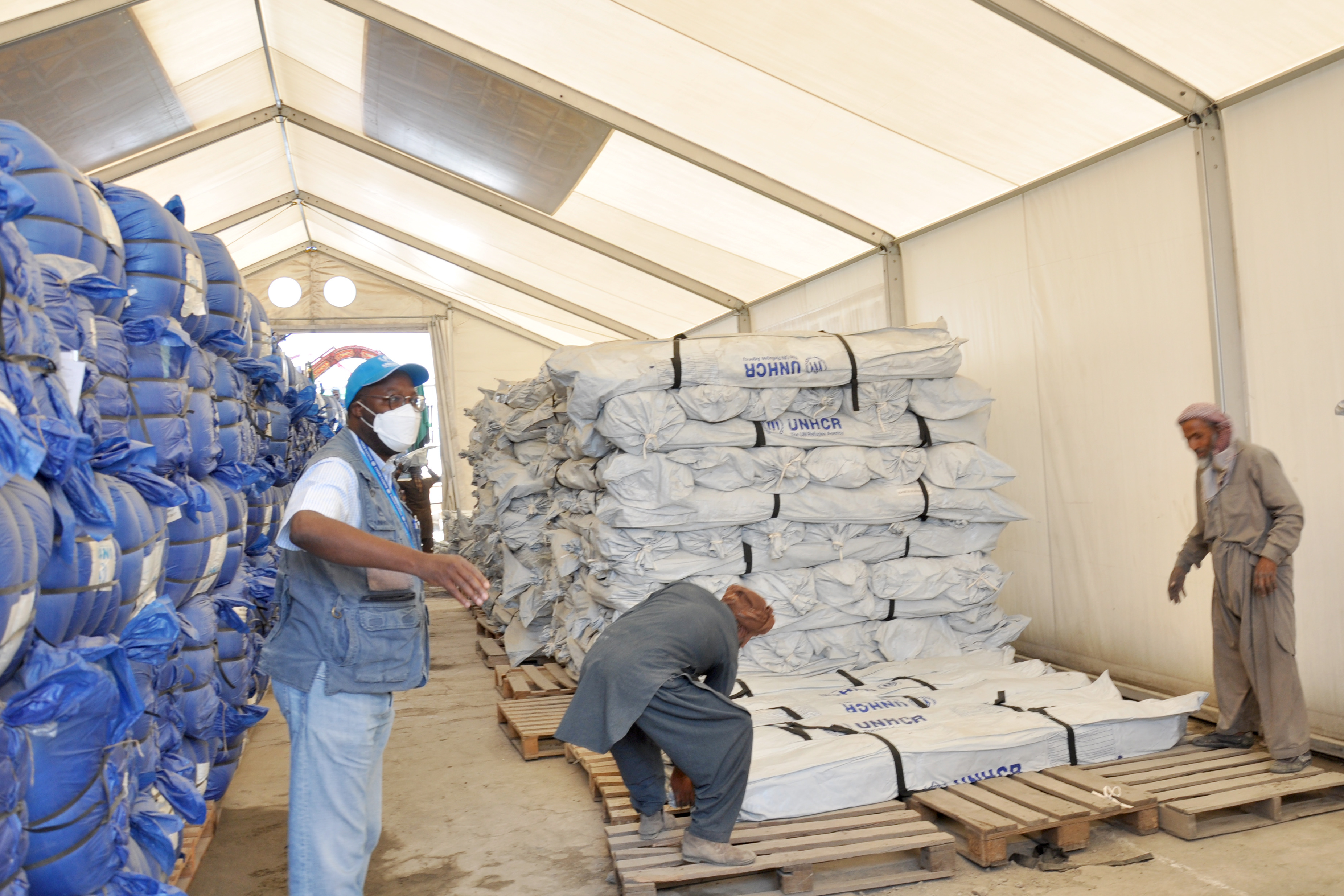Heavy monsoon rains force relocation of quake survivors in Kashmir
Heavy monsoon rains force relocation of quake survivors in Kashmir

MUZAFFARABAD, Pakistan, July 24 (UNHCR) - Some 3,880 earthquake survivors have been relocated to relief camps from villages at risk of landslides as heavy monsoon rains pound quake-affected areas of northern Pakistan.
The relocation exercise was completed over the weekend after four weeks of intense efforts by the Camp Management Organisation (CMO) in Pakistan-administered Kashmir, the International Organization for Migration (IOM), the UN refugee agency and the UN Children's Fund.
The earthquake of October 8 last year killed more than 73,000 people, totally destroyed a hundred villages and laid waste hundreds more, leaving many at risk of further aftershocks and landslides.
Earlier this year, the Pakistan government conducted a survey of these villages to assess their safety for displaced people who wanted to return and for those who never left. There were concerns that more than 50,000 people might have to be moved from villages in Pakistan-administered Kashmir to existing camps until next spring. As it turned out, fortunately, the numbers were much lower - most villages were only partially at risk.
To prepare the affected villagers for relocation before the onset of monsoon rains around mid-July, a mass information campaign was launched in the second half of June. The relocation was mandatory due to the risks involved, but the villagers had a choice as to which camp they wanted to move to. They were allowed to take with them all their belongings. Some villagers chose to go to their families or rent land to pitch their tents, but a great majority opted for the existing camps in and around the provincial capital, Muzaffarabad.
Most of the camps are fairly close to the evacuated villages. So the evacuees have easy access to the city, where many work, as well as to their village of origin, where they may want to visit.
In Brora, Shafaqat, a young boy of 11 with bright eyes and a smiling face was waiting with his family of six to be relocated to Meira Tanolia camp. Their house on the other side of the mountain collapsed during the earthquake, and Shafaqat lost a brother and a sister when the school building was destroyed. They moved to this side of the mountain. Now, they had to move again.
The affected villages were often not accessible by road, and the terrain was difficult and dangerous. During relocation, the CMO officials and partners were seen climbing up breathless, with their shirts stuck to their backs from sweat, trying to reach these villages, check names against the registration list and move the villagers on UNHCR-funded IOM transport to their destinations.
UNHCR, CMO and other agencies provided the same assistance to all relocating villagers - two tents for each family, with bedding and other food and relief items. Camps have also been provided with better water and power supplies and new sanitation facilities.

Standing in the doorway of her home with a six-week-old baby in her arms, Zohra was waiting to be transported to her new home in the Deryan Seydan camp. Just 22 years old, her young face was lined with sadness and bewilderment. She had been through a horrific earthquake, and a few days ago she lost her husband in a road accident. Her village, Makri Bala, slopes onto the Neelum river bank and was seriously damaged in the 1992 floods.
Despite all that, she had not lost her willpower. She had been offered relocation to a refuge for widows and orphans run by Al-Khobaib, a Turkish non-governmental organisation. She refused, choosing instead to join her fellow villagers in Deryan Seydan camp - an important first step in facing the future.
By Solmaz Dabiri in Muzaffarabad, Pakistan








